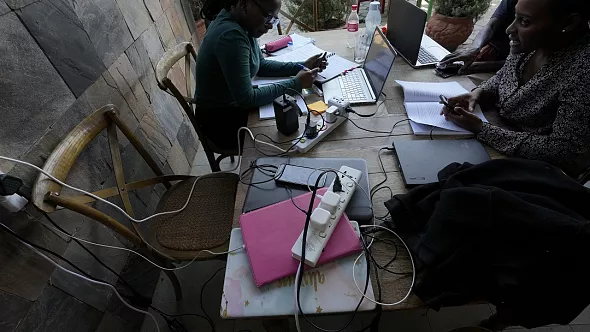Less than half of Zambia’s 20 million people had access to electricity before Kariba’s problems. Millions more have now been forced to adjust as mothers find different ways to cook for their families and children do their homework by candlelight.
Zambians are facing a daily struggle to find electricity during a climate-related energy crisis that’s robbed the southern African country of almost all its power.
Some Zambians are so exasperated that they’ve taken to lugging their entire desktop computer — hard drive, monitor, everything — to a local cafe so they can work.
Zambia’s worst electricity blackouts in memory have been caused by a severe drought in the region that has left the critical Kariba dam, the source of Lake Musonda’s woes, with insufficient water to run its hydroelectric turbines.
Kariba is the largest man-made lake in the world by volume and lies 200 kilometers (125 miles) south of Lusaka on the border between Zambia and Zimbabwe.
The massive dam wall was built in the 1950s. It was meant to revolutionize the countries’ energy supplies by trapping the water of the Zambezi River, turning a valley into a huge lake and providing an endless supply of renewable hydroelectric power.
That’s not the case anymore as months of drought brought by the naturally occurring El Nino weather pattern and exacerbated by warming temperatures have put Zambia’s hydroelectric station on the brink of completely shutting down for the first time.
Less than 10% of normal output
The water level is so low that only one of the six turbines on Zambia’s side of the dam can operate, cutting generation to less than 10% of normal output. Zambia relies on Kariba for more than 80% of its national electricity supply, and the result is Zambians have barely a few hours of power a day at the best of times. Often, areas are going without electricity for days.
The most damaging impact is during the daylight hours when small businesses, the backbone of the country, struggle to operate.
“I tell you, we’ve stayed five days now without power,” says Tindor Sikunyongana, who is trying to run a welding business.
His frustration, like Phiri’s, is evident. Sikunyongana says he has tried to ease the impact by investing in a diesel generator, but the fuel is expensive, and he can’t always afford enough.
His generator ran out of diesel and spluttered to a halt as he spoke.
Experts say Zambia is paying for a lack of diversity in the energy sector.
“85% dependency on hydro is obviously a risk,” explains Geoffrey Chiyumbe, Vice Chairman of the Energy Committee at the Engineering Institute of Zambia.
“We needed to have a mix of renewable and non-renewable energy sources so that in case one fails, we are not put in a crisis like the one we are in,” he adds.
At Kariba, the 128-meter-high (420-feet) dam wall is almost completely exposed. A dry, reddish-brown stain near the top marks where the water once reached in better times more than a decade ago.
